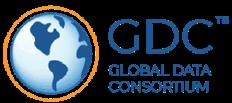
























If you were born in the late 20th century, you’ll remember the age before everyone had a large computer processor readily available in their purse or pocket. You’ll remember landlines and the agonizingly slow process of dialup internet. You’ll recall taping songs you loved off the radio and hoping the DJ wouldn’t talk through the best parts of it. Just like our technology has evolved, particularly in the last twenty years as we marched into the 21st century, so has our way of looking at credit.
Who’s creditworthy in 2021? Years ago, only people with full-time jobs
who paid their one credit card off every month and diligently paid down their mortgage or auto loan could easily qualify for more credit (in other words, people who already had credit). But that’s evolving, rapidly. Today, up to one third of all adults globally (approximately 1.7 billion at last count, according to the Global Findex database) lack any type of bank account1 –effectively making them unbanked, and as a result, difficult to score for creditworthiness according to traditional methods.
s the world changes, so too has the way we make credit and lending


decisions and develop new financial services products. lternative data, quickly becoming a hero of credit scoring, can help financial services organizations see creditworthiness in a new light. More accurate risk decisions, improved fraud detection, financial inclusion, the ability to say yes to more customers, and greater business agility are just some of the benefits that using alternative data can provide. Traditional credit scores and the methods used to obtain them can still serve a useful purpose (just like some of us still maintain a landline in our homes), but the time has come for lenders to evolve beyond the traditional.
What exactly is alternative data? It’s a more varied way for lenders to evaluate those individuals with a thin (or no) credit file – namely, not a lot of credit history to date. This vastly
benefits those who can’t be easily scored via traditional methods, including younger consumers, immigrants whose credit history may not be transferrable, and minorities who may not have been easily approved in the past. Examples of alternative data include mobile phone data, social media accounts, location data, open banking info, web presence data, and things like your rental payment history or utility records. Essentially, anything that can help lenders (and the data partners they utilize) put together a more holistic, comprehensive view of an individual’s risk.
We spoke with some of our industry-leading data partners on why utilizing alternative data is so critical for the continued evolution of financial services organizations, and how it makes a meaningful impact both on their business, and on the customers they serve.


For decades, lenders have had to rely on single, static measures like credit scores and paystubs to determine creditworthiness. While these are useful tools for assessing risk, they don’t always tell the whole story. This is particularly true for non-traditional borrowers and those from historically disadvantaged groups. With alternative data, however, lenders and other institutions can build a more complete understanding of a borrower’s financial situation. Payroll data, for example, can allow those with multiple income streams, like gig workers and freelancers, to prove their income and employment to lenders, who can in turn feel more comfortable underwriting loans to these segments.
To improve risk decisioning accuracy, it’s important to understand the whole story, which goes beyond the use of traditional credit scores. With the addition of real-time income and employment data, financial institutions can rest assured that the numbers they’re seeing are correct – no lag time, no mistakes and they offer a holistic story for a risk profile. dditionally, decisioning accuracy is advanced by new types of data like background on shift and gig workers that have historically been inaccessible. Lenders and banks now have access to a greater depth and breadth of data and can combine that information with “traditional” measures like credit scores. nd the better – and more diverse – your data, the better your decision-making.
Credit scores are no longer the only game in town when it comes to assessing financial risk. s sources of alternative data prove their effectiveness, we see lenders combining credit scores with these other indicators to make more sound decisions. We also predict real-time financial data and aggregators to continue to grow in popularity as the technology improves and the economy continues to change. With the increasing number of independent and gig workers, and workers with multiple income sources, banks and other institutions will need to


cater to the specific needs of these customers or risk being left behind. data will thereby become a differentiator when it comes to underwriting models, and as such, many will rely on aggregators to make their decisions.

s a leading employment data platform, rgyle provides a trusted way to connect employment records to credit applications in real time, with user consent. By unlocking a traditionally monopolized dataset, rgyle is making it easier, faster, better and smarter for innovative companies to put employment data to work for their users.
The use of alternative data is not just for loan origination and onboarding. pplied across the customer lifecycle, the use of Open Banking ensures more efficient personal finance management, debt collections, and customer engagement and retention. lternative data for consumer lending allows for more rapid and accurate income verification, as well as enhanced affordability insights. With alternative data, loan applications are simplified and direct connections to bank transaction data also reduce the time and cost spent assessing the


creditworthiness of individuals. Uniquely, Credit Kudos links Open Banking data to loan outcome data, which enables us to provide much richer, more comprehensive risk insights. The use of these insights helps lenders more accurately assess affordability and risk for their customers, better identify vulnerabilities and reduce defaults across their portfolio.
Open Banking also vastly enhances fraud prevention; since all data is bank verified it removes the opportunity for individuals to manipulate data (i.e. uploading pdfs of payslips during a loan application). lternative data also enhances customer management, providing value and efficiency throughout the lifecycle. Customers these days are increasingly expectant of personalization – the use of Open Banking data in lending helps to build customer engagement tools that enable lenders to enhance customer retention and loyalty and create more personalization throughout the lifecycle of the customer. For example, customized personalized finance management (PFM) tools that provide tips to improve their financial situation, or personalized debt repayment plans.
The pandemic led to higher levels of collections touchpoints, but that can seriously impact a lender’s relationship with their customers as it’s usually a very emotional and stressful conversation. Open Banking enables a willingness to engage in the collections process since necessary information is collected automatically, and then displayed through a dashboard or PI to the debt collection agency. faster, less stressful experience for the end consumer means a more efficient and successful debt repayment plan for the lender and a better outcome for the customer.
s the future of credit decisioning continues to evolve, we believe that alternative data and Open Banking will be at the heart of it. More and more, we’ll see discussions around Open Finance and how bringing in new forms of open data will enable lenders to better understand and assess an applicant, ensuring customers have better access to a variety of types of financial services products, and more personalized products geared specifically to their needs. The more data you have, the better


you can make credit decisions and the more efficiently you can serve your customers. Currently, our financial selves are quite siloed from the rest of our lives – Open Finance will power our move to a more holistic financial picture of each individual and help to create a more horizontal view of finance.
Contributed by Credit Kudos

With a vision of transforming the credit scoring system to provide fairer credit for everyone, Credit Kudos builds intelligent products so businesses can leverage Open Banking to enhance affordability and risk assessments. Customers use their products to streamline underwriting, improve accuracy in decisionmaking, and support customers after acquisition through engagement tools.
Many countries don’t have a centralized registry (like Companies House in the U.K.), making it extremely challenging to collect reliable financial performance data on small and private companies. Credit scores play an essential role in providing small and medium-sized enterprises (SMEs) with access to commercial credit. SMEs are generally thought to be the backbone of any healthy economy; they drive growth and provide employment opportunities. However, a lack of financial data on SMEs can mean that Credit Reporting gencies (CR s) are sometimes unable to accurately determine the amount of credit that could be safely lent to a business, resulting in a lesser credit score and recommended credit


limit compared to those with a history of financial data available. To allow SMEs access to better credit terms, lenders and CR s leverage alternative data sometimes not found in a traditional credit report. For example, invoice data, open banking, V T data, or commercial bank account data provided by central banks.
lternative data can be instrumental in cases where a company has little or no financial history. For example, allowing lenders to understand whether a company has cash in the bank or a history of repaying other trade credit providers on time can provide SMEs with much-needed access to finance. Lenders and trade credit providers ultimately want to provide finance, goods, or services to as many customers with as little financial risk as possible. ccessing alternative data means lenders can extend credit to businesses that may not have historical financial performance data available on a credit report without the heightened risk of bad debt.
Our prediction for alternative data is that it’s here to stay. Recent government initiatives, Open Banking, and trade credit providers are already contributing to the amount of data available on SMEs. The challenge now lies with CR s to use this data to support business lending and the provision of trade credit to SMEs.

Creditsafe, the world’s most used provider of business credit reports, delivers the most accurate and up-to-date information in an easy-to-use format on over 365 million businesses worldwide. With a database that contains detailed company performance and financial data on businesses globally, Creditsafe is trusted by companies of all sizes to speed up onboarding while minimizing credit risk and fraud.


Credit underwriting and lending businesses have long been grappling with the lack of data to assess creditworthiness and risk, especially for the new-to-credit (NTC) and ‘thin file’ segments. These challenges have been exacerbated by the pandemic-triggered moratorium, payment holidays, and forbearance programs provided by governments, central banks, and lenders as part of relief measures to consumers struggling with repayment on credit. Behavioral approaches to credit repayment that assess the willingness to pay and not just rely on the ability to pay are extremely important in this context.
Less than 50 countries have some kind of formal and functional credit reporting and yet, globally less than 20% of the adult population has access to formal credit. This means that the conventional credit data and score cover a global minority, thus posing a huge challenge to the rapid or scalable growth of financial inclusion. Since credit drives both income and consumption, credit is evidently the biggest problem to be solved as far as financial inclusion is concerned. Payments, banking, investments, savings, and wealth management are all important problems to be solved as well, incrementally. Conventional approaches need to be augmented and complemented with alternative data to truly achieve large-scale and profitable financial inclusion.
Lender or portfolio-specific behaviors and the ensuing credit losses are not fully addressed by conventional credit scores that have not been updated for months. Credolab addresses these important challenges that are relevant for all customer segments, financially excluded and not, individuals and small businesses. In parallel, we have explored using


our embedded scoring technology to solve for new use cases such as the low performance of digital marketing activities (especially cross-sell or up-sell for issuers and lenders but also matching offers for financial marketplaces), collections where lockdowns make it difficult to recover disbursed funds, increased fraud coming via digital origination channels, detection of high probability to file an insurance claim, mobile lifestyle indicators and customer app usage insights for an improved audience and target selection, and many more.
lternative data has resonated with the democratization of data just the same way alternate credit and alternate lending (think Buy Now, Pay Later) have resonated with the democratization of credit and financial inclusion in recent years. While multiple sources of alternative data can be evaluated on their usefulness or utility value for insights and scoring, a nuanced approach to what kind of alternative data is used for a disclosed use case and how the data is stored, processed, analyzed and used becomes extremely important. Data privacy regulations apart, customers themselves are increasingly attentive and sensitive to the consented uses of their data. Individual privacy is no longer a privilege and a privacy-first and privacy-protected approach are of paramount significance for the future of alternate data.
Contributed by Credolab – Vishwas Mysore, Senior Director – Global Presales & Solution Consulting

Credolab is committed to making credit available to all, giving businesses access to highly-predictive behavioral data from mobile phone and web use to make faster, better credit scoring decisions with zero error rate.


The global pandemic has put immense pressure on the credit risk process, and lenders are finding it more critical than ever to ensure that the data used to make decisions is both up-to-date and relevant. Bank statement data is a universal constant from an existing trust network that can be leveraged to solve these pains. By introducing bank data to the decisioning process we can start to move away from a model that requires an individual to have credit to get credit. This opens the door to applicants with thin files, new to country status, and historically ‘moderate’ credit scores.
We’re living in a more digital and global economy than ever before, so lenders need real-time indicators of credit risk to make better and faster decisions. s Open Banking expands to a wider range of accounts, the value gap between CR data and Open Banking data will continue to grow. Currently, by utilizing bank data, lenders can make assessments based on real-time data derived straight from a customer’s bank account. By accessing that raw data, and leveraging the bespoke insight reports built by DirectID, lenders can reduce loan application times from days to seconds. Not only does this save on both resources and time, but it also provides the customer with a much faster, smoother customer experience.
Solving that key credit issue, understanding a customer in real-time, is where bank data can help lenders transform the way in which they do business. By using our insight engines, lenders have been able to build a detailed profile on their customer, giving them a more detailed view on their income, borrowing habits, end of day balance, spending patterns, gambling patterns, and more. This can all be applied to a portfolio of


customers too, where using bank data can identify trends and potential risks across thousands of borrowers. The operational benefits here have been huge.
We are already seeing the industry start to seriously consider ‘Open Finance’ and what this means for real life use cases. When we open the scope to Open Finance, there becomes a much more complete view of a customer’s financial circumstances. By linking in accounts such as savings or long-term investments we can attain a wider view on an individual’s financial profile. Open Finance provides a wider scope for businesses to be able to offer more tailored advice to their customers.
In the future we see a continuation from this – what many would call ‘open data’. This is a natural extension of even open finance, giving consumers the ability to share their wider data through a connected ecosystem for their own benefit. This will bring about a new world of opportunity for businesses and their consumers. For businesses, they’ll be able to understand their customers like never before, resulting in hyper-personalized products and experiences that consumers can reap the benefit of.
Contributed by DirectID – James Varga, CEO & Founder

DirectID provides global credit risk insights that leverage realtime bank data to support the world’s leading brands. With a platform and insights that are designed to solve the pain points experienced throughout the credit risk lifecycle, DirectID supports global B2C and B2B lenders in facilitating better, faster and more confident risk decisions.


“How trustworthy are our loan applicants?” is the fundamental question that our clients ask. When it comes to fraud, leveraging data has the potential to help spot flag risks and predict fraudster activity. lternative data encompasses new areas such as geo-locations, consumer creditworthiness and behaviors, and social media. The alternative data creates an overall view of borrowers’ behavioral patterns. When FinScore analyzes Telco Data variables such as data and voice usage, top-up patterns, geo-location, and SIM activation date, etc., it can compare the data of a borrower versus his declared information in the loan application. Telecom data-based fraud prevention tools help our clients from the banking and lending industry to verify their geo-location, primary contact persons, and identify links between an applicant and already identified fraudsters.
On the other hand, financial institutions, banks, lenders, e-commerce, e-wallets, insurance, auto loan companies, or essentially any business that needs to make better credit decisions, can leverage Social Media Presence Data to instantly confirm if an applicant’s declared e-mail address and mobile number are registered on more than 20 social media platforms. Banks and financial institutions of any size are increasingly having confidence to explore and integrate lternative Data Credit Scoring as a standalone risk model. It can even be combined with their current traditional scoring models to increase its predictive power. Not only can it increase their profitability, but also reduce costs due to its speed and efficiency. On the other hand, customers will see more variety, flexibility, and opportunities to access credit. For the past 12 months, we’ve witnessed heightened interest and adaptation from microlenders, neobanks, digital lenders, universal banks, and consumer finance companies.


The COVID-19 pandemic and its vast impact have pushed businesses in all industries to adapt and an increasing number of different businesses are recognizing the value of alternative data that may not have been on their radar a few years ago. lternative data will soon become widespread, making a huge difference and helping different businesses to make well-informed decisions much more quickly.

FinScore, a credit-scoring company based in the Philippines, is powered by telco data and advanced analytics. Their digital credit scoring models/platform and fraud detection solutions help financial institutions reduce defaults, increase approval rates and combat fraud.
ccording to Thomson Reuters2, the addition of Customer Due Diligence (CDD) into standard processes could add up to 15-30 minutes of extra time per case. That may not sound like a lot at face value, but it adds up. Further, it could cost U.S. companies up to $287 million dollars annually3. Electronic identity verification uses personal information such as name, date of birth, or national ID from various data sources such as mobile carrier databases, judicial registries, utility provider records, consumer and subscription records to quickly confirm if an individual is who they claim to be.


Many traditional data source types leave out significant chunks of the population. For example, if an individual between the ages of 1825 is opening an account at a financial institution but this financial institution only had credit data, they may not receive a match because that individual may not have built up a significant credit history yet. lternatively, a recently immigrated individual may not have a permanent address with a queue of utility data or a national ID. That’s why having a variety of real-time, in-country sources is the key to maximum coverage.
s the digital world continues to grow, options for alternative data will too. The rise of fintechs, crypto, and other connected services will give people a larger digital footprint to tap into for eIDV.

Global Data Consortium (GDC) offers global electronic identity verification (eIDV), allowing customers to streamline identity verification operations, and providing local, high-quality, authoritative data that complies with global Know Your Customer (KYC) and nti-Money Laundering ( ML) regulations.


long with giving us a unique insight into customer behavior, alternative data is a cost-effective data set for our partners. lternative data not only provides search activity, but also provides a much more detailed picture of what and why a person is engaging in the credit market, as well as instant outcome data too. Credit reference agencies have historically viewed credit search data to be predictive, but since the advent of “soft” credit searches this information has increasingly become invisible. s a result, alternative data can address two key challenges faced by a number of sectors; assessing consumer creditworthiness and affordability.
s well as providing information on the disposable income an individual has, alternative data unlocks additional behavioral insights worth highlighting in relation to affordability. They include:
● Is a customer borrowing to pay bills or is the credit for more aspirational purposes?
● re there signs of financial distress or vulnerability (such as unemployment)?
● Is a customer able to access the credit they want?
Furthermore, demographic information can be modelled to look at whether a customer’s disposable income is below average, average or above average. These key insights can help businesses obtain a holistic understanding of a consumer when it comes to ffordability nalysis.
There is a bright future for alternative data, given that organizations are constantly looking to improve their understanding of customer


(or traditional) data sources have been used for too long, but the world has largely moved on to the point where affordable data is now broadly available. Organizations must now look to sources such as alternative data that will fill in the gaps in their knowledge and subsequently combat modern day challenges when it comes to understanding customer behavior.

Infinian provides highly insightful data to the financial services sector, fintech companies and some of the largest global data businesses and credit bureaus. Their suite of products enables partners to enhance the quality of their credit decisions and existing customer databases, allowing them to create more efficient and profitable operating models.
Objective, reliable data is necessary for risk-based pricing, financial stability and the health of lending markets around the globe. Rather than using only traditional data sources, alternative and trended credit data assets create a more complete picture of consumers.


credit data supplements an individual’s credit risk with non-traditional information, such as short-term loans, utility or rental payment data. Similarly, trended credit data looks at activity over a period of time to reveal that while someone may appear risky, they’ve actually demonstrated increasingly positive performance on their credit obligations. The combined data enhances lender strategies, allowing them to better manage current consumer portfolios and address the millions of consumers who are considered unscorable.
and comprehensive data demonstrating a consumer’s ability to manage their credit and other obligations allows consumers — especially disadvantaged consumers — to access financial products that would otherwise be unavailable. TransUnion’s analysis in the U.S. found with the inclusion of rental payment tradelines in the credit file, approximately 9% of those consumers went from unscorable to scorable with an average credit score of 631 — placing them in the near prime score band (VantageScore 3.0 range of 601–660)4. separate analysis in Latin merica, specifically Colombia, found that nearly 6.3M adults lack financial inclusion5. Based on initial validations, CreditVision Link with TransUnion alternative credit data has proven to accurately score an additional 5.9M adult Colombian consumers, which would help raise the financial inclusion to 97% — well above the national government’s goal of 85% by 20226. That is a significant improvement for consumers who would have likely been deemed unscorable, and highlights the importance of a uniform, universal data reporting format to improve credit visibility. Inclusion of alternative credit data is a win-win across the consumer lending ecosystem: it allows lenders to reach more consumers while managing risk and brings millions of credit-invisible consumers into the mainstream financial system.
One of the best things we can do is help thin files become thick files — not just through innovative trended credit and alternative credit data solutions but by making non-traditional tradelines available to enhance lending decisions. These sources help consumers demonstrate their ability to manage different types of financial obligations. We can better


address inequalities by having more access to non-traditional data, which provides a more holistic financial picture of consumers. In addition to new, non-traditional tradelines, the ecosystem will continue to evolve to accommodate consumer-contributed data more seamlessly.

TransUnion is a global information and insights company that makes trust possible in the modern economy. They do this by providing a comprehensive picture of each person so they can be reliably and safely represented in the marketplace. s a result, businesses and consumers can transact with confidence and achieve great things. They call this Information for Good®.


We’ve looked at how the industry views alternative data, and why it’s increasingly becoming more critical to the credit scoring process – but if you’re a lender, what’s the most effective, efficient way to access and utilize all of this data? This is where a risk-decisioning ecosystem comes into play. Credit scoring and available data has evolved and riskdecisioning software has too. You may be faced with data silos and aren’t sure how to properly integrate various data sources – what’s required is a single solution that unifies data, decisioning, analytics and insights to allow for better and faster data integrations, deployment of decisioning workflows, automated
decisioning and iteration of credit products and processes. By effectively utilizing alternative data sources, you can more easily create a comprehensive risk profile of your customers – expanding your product offerings to those who may have previously been deemed unworthy, while still efficiently managing your risk. The ability to make more accurate risk decisions, promote financial inclusion and more efficiently prevent fraud is complemented by the fact that a risk-decisioning ecosystem also enables you to scale and grow your business, innovate with agility and maximize the lifetime value of your customers.


With Provenir’s Cloud Suite solution, the evolution of risk decisioning software is evident. One platform made up of four cloud products brings together global data, automated risk decisioning and advanced analytics and insights – powering world-class consumer experiences for your customers and enabling you to innovate your business faster. s part of the Data Cloud, we offer you the Global Data Marketplace – a one-stop-shop for all of your data needs, providing rapid integrations to a variety of data sources with a single PI. Power your global and regional Get the eBook
data strategies with simplified access, ensuring you get all of the benefits that world-class data partners can offer, without the integration headaches and maintenance costs. To find out more about our data partners, or our Cloud Suite, visit: https://www. provenir.com/possibilities.
To read more
about
how alternative data can change your view of your customers, check out our definitive guide:


Endnotes
1 https://globalfindex.worldbank.org/#data_sec_focus
2 https://legal.thomsonreuters.com/en/insights/articles/cost-of-compliance-for-banks-withnew-cdd-rule
3 https://www.federalregister.gov/documents/2016/05/11/2016-10567/customer-due-diligence-requirements-for-financial-institutions
4 https://newsroom.transunion.com/alternative-data-such-as-rent-payment-reporting-bridges-the-gap-for-unscorable-consumers-and-increases-financial-inclusion-opportunities/
5 Banca de las Oportunidades Financial Inclusion Report 2019
6 TransUnion Internal Data and Banca de las Oportunidades Financial Inclusion Report 2019

